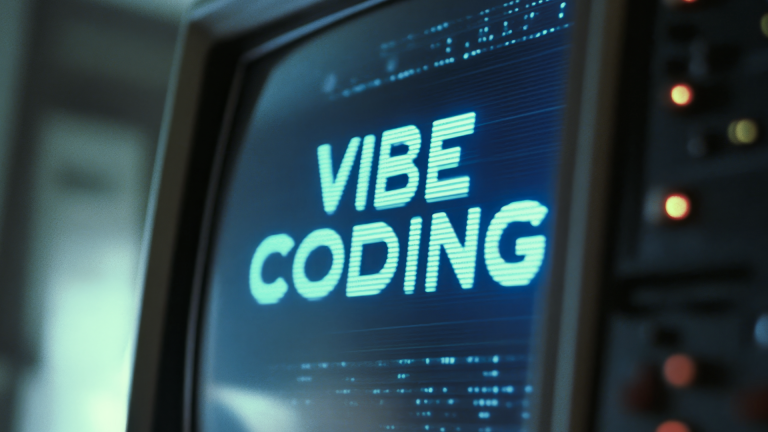AI, like most forces majeures, didn’t begin with a bang; it was more of a whisper.
Just think of it like a snow-capped mountain in winter. First, a few clouds roll in, flurrying fresh snow down onto the icy slopes. Then the winds might start to pick up, with strong gales beginning to batter the sides of the mountain.
The storm will have passed by morning; but as the sun rises higher in the sky, its radiating heat melts the snow. An unstable layer beneath the surface gives way, and suddenly, there’s an avalanche.
Most likely, no one thing caused this landslide. It was a rippling effect – the weight of fresh snow; the blustery wind fracturing the snowpack; the heat of the sun delivering a final blow, unleashing an icy torrent.
We’ve seen today’s AI Boom unfold in much a similar way.
It started with a new app that writes your emails for you, a chatbot that spits out code better than the intern, a voice assistant that can whip up a legal draft in seconds. “Cool trick,” you think. “Saves me a few hours.”
But then it snowballs. That intern? Gone. That junior coder? Automated. That assistant? Replaced by an algorithm that doesn’t need PTO – or espresso. Suddenly, your little productivity boost has evolved into a workforce disruption of global proportions.
Welcome to the AI Restructuring: likely the most profound shift in labor since the invention of the steam engine.
But this isn’t the end of work; just of work as we knew it. And in its place? A new paradigm built not on muscle or memory but on vibes.
What Is Vibe Work? How Prompt-Based Labor Is Replacing Traditional Coding
We’d like to make one thing clear: the robots aren’t coming – they’re already here.
AI systems can now:
- Write your code
- Design your website
- Craft your resume
- Generate your brand strategy
- Do your homework (better than you could)
This is Phase 1: the digitization of cognitive labor. And it has cracked open the floodgates.
Instead of writing syntax, debugging loops, or running Stack Overflow marathons…
You can now just say:
“Build me a landing page that looks like Apple’s but for a company that sells coffee subscriptions.”
And the work is done within seconds.
This is “vibe coding.” It’s programming through natural language, design through intention, software by suggestion.
It’s not about being precise; it’s about being evocative. If traditional programming was sheet music, vibe coding is jazz.
Now, here’s the brutal reality behind it: the once-wide moat of technical skill is shrinking fast.
You may have spent years learning how to write Python. But now a 13-year-old can whisper a prompt into GPT-4o and build the same app in 30 seconds.
This certainly isn’t fair. But it is real.
Because the machines now do the heavy lifting. And the skills that matter most?
- Vision clarity
- Prompt creativity
- Iteration speed
- Taste
Vibe work rewards people who know what they want and can describe it vividly. The best programmers of the future might not know how to code. But they’ll know how to explain what they want to build.
Welcome to the world where development is merely a conversation.
Vibe Work Expands: Humanoid Robots Will Reshape Physical Labor
But here’s where it gets even wilder. This isn’t just a screen-based revolution. That was just the appetizer…
Next up: the physical world.
AI-powered humanoid robots – like Tesla’s Optimus, Figure’s 01, or Sanctuary AI’s Phoenix – are learning to walk, cook, assemble, lift, paint, clean, and build.
Right now, they’re more like toddlers with motors: hesitant, clumsy, and expensive.
But so was the iPhone in 2007 – no App Store, no video recording, slow internet, and a tiny user base. Today, it’s a pocket-sized supercomputer with AI, 4K video, real-time translation, and global reach.
Humanoid robots may seem underwhelming now, but the curve of progress can be steep… and fast.
In just a few years, you’ll be able to tell these humanoid robots:
“Clean the kitchen like a 5-star hotel maid.”
“Assemble this IKEA dresser and don’t mess up the drawer alignment.”
“Plant these garden beds with symmetry, some elegance, and a little Pinterest flair.”
And they’ll do it better than minimum-wage workers; without breaks, sick days, or complaints.
Just like AI took over knowledge work with prompts, it’s now coming for manual labor with instructions. It’s the same trend but with arms and legs.
This is the beginning of vibe labor.
From Vibe Coding to Full Automation: The End of Traditional Jobs
When the physical world becomes programmable, traditional labor economics will implode.
No more warehouse pickers, fast-food cooks, construction workers, cleaners, or delivery drivers.
At some point, all could be replaced by fleets of vibe-programmed humanoids who never get tired and don’t demand overtime.
And don’t get too comfortable, white-collar world – this is coming for you too. Replaced by a prompt-driven financial model. The marketing copywriter? Automated by natural language AI. The paralegal? Supplanted by GPT-7.
In short: no one is safe unless they evolve.
The way we see it, there are two paths forward…
Two Ways to Thrive in the AI Labor Shift
I: Learn Vibe Coding
Become a:
- Prompt Whisperer – Master the art of communicating with AI through precise, creative commands that yield exactly the output you want.
- Task Orchestrator – Coordinate AI tools and bots to handle complex, multi-step tasks, just like a project manager directing a team.
- Vision Engineer – Define the high-level outcomes, goals, and aesthetics that guide AI systems to build products, campaigns, or experiences.
- Creative Director of AI Systems – Blend storytelling, strategy, and emotional intelligence to supervise fleets of bots that generate ads, designs, presentations, and more.
These people will:
- Manage fleets of bots – Just as managers oversee teams today, vibe workers will supervise armies of digital agents working in parallel across time zones and industries.
- Design workflows through language – Instead of coding, they’ll speak fluently in prompts, scripting AI behavior the way a conductor leads a symphony.
- Sculpt systems by intuition and intent – They’ll say things like “Do it like this, but smoother” and the AI will understand the nuance. Think creative direction meets systems architecture.
You don’t need to learn to code anymore. You need to learn how to instruct machines with precision, creativity, and feedback.
The age of the coder is giving way to the age of the conductor.
II: Invest in the Infrastructure
If you don’t want to learn how to prompt, invest in the companies enabling it.
Back the players building:
- The AI models (OpenAI, Anthropic, Alphabet (GOOG), Meta (META))
- The hardware (Nvidia (NVDA), AMD (AMD), Taiwan Semiconductor Manufacturing Co. (TSM))
- The robotics (Tesla (TSLA), Figure, Agility, Sanctuary)
- The interfaces (Replit, Cursor, Runway, Perplexity)
- The data pipelines, chips, servers, and sensors
We’re confident that AI is not just a tech revolution. It’s an economic restructuring.
Get exposure to the shovels, not just the gold.
Stop Romanticizing Old-School Work – The Future Is Prompt-Driven
You might be tempted to resist. Maybe you love writing code, painting by hand, or working with tools.
That’s fine. You can still do those things. People still ride horses now that we have planes, trains, and automobiles.
But don’t confuse your passion with market value. We’re shifting from doing work to directing it; manual repetition to creative instruction; physical execution to mental choreography.
This is the rise of the meta worker: the person who no longer does the job but guides the machines that do.
And here’s the wildest part… It might be better than it was before…
Because when the machines handle the grunt work, we get more time for creativity. We can scale our ideas faster and turn thoughts into actions instantly.
Want to build a startup in an afternoon or redesign your house with robot labor? Easy. Want to turn a passing idea into a global product? Just say the word.
With vibe coding, we’re unlocking leverage at scale.
Yes, it’s scary. But it’s also exhilarating. And if you embrace it, it’s quite possible that you can multiply your productivity, your creativity, and your wealth beyond anything the 20th-century economy allowed.
The Rise of the Vibe Worker: Prompt Engineers Will Rule the AI Workforce
We began with a mountain – a quiet storm, a fragile snowpack fracturing under the pressure, layer by layer.
Now the avalanche is upon us.
The AI era didn’t erupt overnight. It crept in, one clever prompt at a time. But the tremors are giving way to a collapse of the old world of work. The hillside has broken loose. And what’s cascading down isn’t just chaos; it’s transformation.
Vibe work is the terrain that comes after the slide. It’s where the sharpest minds won’t just survive the fallout. They’ll thrive because of it.
In this new landscape, leverage doesn’t belong to those with the strongest backs or the deepest résumés. It belongs to those who know how to direct the flow; those who can see the shift and shape it.
So, you have a choice:
You can stand there, frozen, and let the avalanche bury your career in nostalgia.
Or you can react to the deluge and become the kind of worker who doesn’t fear the future – because they’re programming it.
The snow has broken. The slope is moving.
The future belongs to the vibe workers.
Our favorite way to play this economic wave? AI 2.0 stocks: the firms creating the next generation of intelligent humanoid robots.
In the early days of the Internet Revolution, many folks thought that programs like Microsoft Word and Excel would be niche office productivity tools… or that Amazon would be just another bookseller…
Needless to say, they missed out on millionaire-minting gains.
Those who saw the writing on the wall with companies like Microsoft and Amazon had the chance to amass fortunes.
We believe robotics is a corner of the AI Boom that could be just as profitable.
And if you’re not quite sure which companies to focus on, we have you covered with a special presentation.


